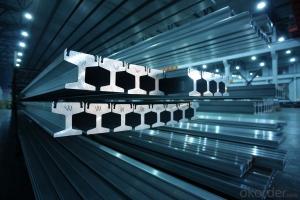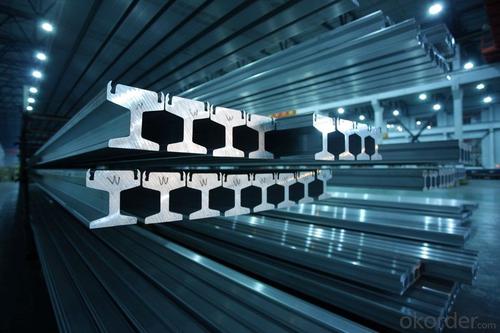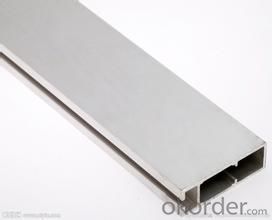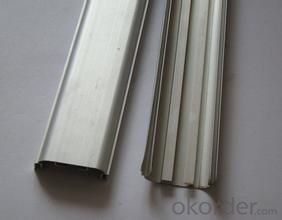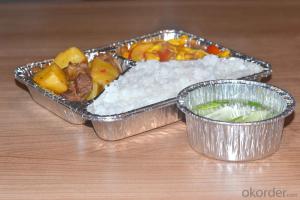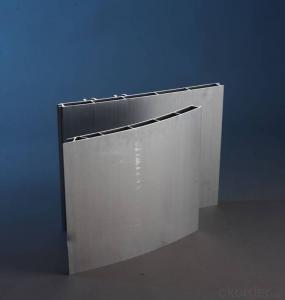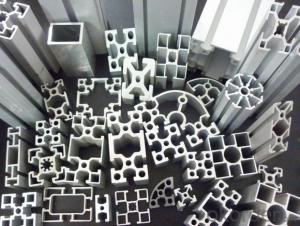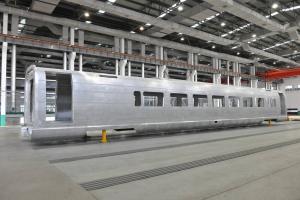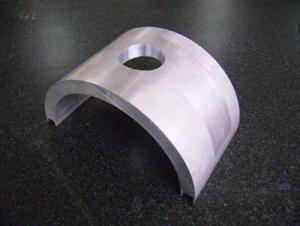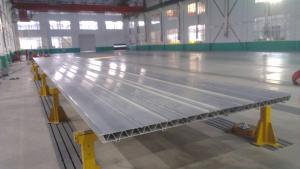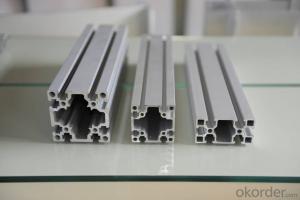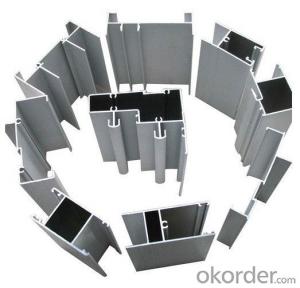Standard Extruded Aluminum Profiles for Making Ship Masts
- Loading Port:
- Shanghai
- Payment Terms:
- TT OR LC
- Min Order Qty:
- 5 m.t.
- Supply Capability:
- 1000 m.t./month
OKorder Service Pledge
OKorder Financial Service
You Might Also Like
Specification
1. Structure of Aluminium Extrusions for making Ship Mast Description
Aluminium Extrusions for making Ship Mast is one semi-finished aluminium material. The alloy AA6082 T6 is widly used in building, industry ect. Its weight is much lower than steel. So many customers choosed aluminium material instead of steel.
2. Specification of Aluminium Extrusions for making Ship Mast
Aluminum Extrusion | |
Main Specification | |
Alloy | AA1xxx (AA1050, AA1060, AA1070, AA1100 etc.) |
AA3xxx (AA3003, AA3004, AA3005, AA3105 etc.) | |
AA5xxx, AA6XXX (AA5052,AA5083, AA5754, AA6061, AA6062 etc.) | |
AA8xxx(AA8011, AA8006 etc.) | |
Temper | H14,H16, H18, H22, H24, H26, H32,O/F, T4, T6, T651 |
Thickmess | 0.01mm-100mm |
Width | 30mm-1700mm |
Standard | GB/T 3880-2006/ASTM |
Special specification is available on customer's requirement | |
3. Application of Aluminium Extrusions for making Ship Mast
(1).Interior: wall cladding, ceilings, bathrooms, kitchens and balconies, shutters, doors...
(2).Exterior: wall cladding, facades, roofing, canopies, tunnels,column covers , renovations...
(3).Advertisement: display platforms, signboards, fascia, shop fronts...
4. Feature of Aluminium Extrusions for making Ship Mast
Surfact Quality :
Be free from Oil Stain, Dent, Inclusion, Scratches, Stain, Oxide Dicoloration, Breaks, Corrosion, Roll Marks, Dirt Streaks and other defect which will interfere with use,
Mechenical Property:
Chemical Composite and Mechanical Property
5. Certificate of Aluminium Extrusions for making Ship Mast
SGS and ROHS(if client request, paid by client), MTC(plant provided), Certificate of Origin(FORM A, FORM E, CO), Bureau Veritas and SGS (if client request, paid by client), CIQS certificate
6. Image of Aluminium Extrusions for making Ship Mast
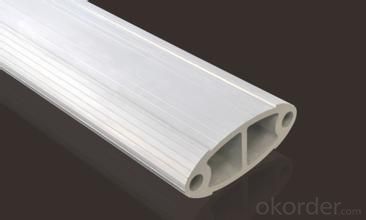
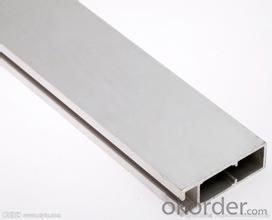
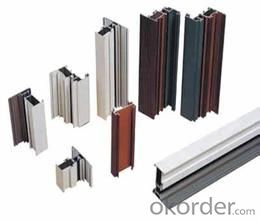
7. Package and shipping of Aluminium Extrusions for making Ship Mast
First, plastic cloth with drying agent inside; Second, Pearl Wool ; Third, wooden cases with dry agent , fumigation wooden pallets, aluminum surface could cover blue PVC film
8. FAQ
1) What is the delivery time?
Depends on actual order, around 20 to 35 days
2) What is the QC system:
We have QC staff of 20 persons and advanced equipment, each production is with MTC traced from Aluminum ingot lot.
3) What market do you mainly sell to?
Australia, America, Asia, Middle East, Western Europe, Africa etc
- Q: How is the aluminum alloy profile series divided?
- The classification of aluminum alloy profile series has different classification results according to different classification standards.First, the use can be divided into the following categories:1. doors and windows of the construction of aluminum windows and doors (divided into two types of doors and windows and curtain wall).2. aluminum alloy shelf aluminum profiles, they are different from the shape of the cross-section. But they are produced by hot extrusion.3. aluminum industry: mainly used in automation equipment, sealing cover skeleton and the custom mold machinery and equipment according to their own requirements, such as assembly line conveyor belt, hoisting machine, glue machine, testing equipment, electronic machinery industry and clean room with!Two, according to alloy classification:Can be divided into 1024, 2011, 6063, 6061, 6082, 7075 and other alloy grade aluminum profiles, of which the 6 series are the most common. Grades are different in various metal components ratio is not the same, except for the commonly used aluminum profile doors and windows such as the 60 series, 70 series, 80 series, 90 series, curtain wall series aluminum profile, aluminum industry has no clear distinction model, most manufacturers are in accordance with the actual processing of customer drawings.Three, according to surface treatment requirements classification:1. anodized aluminum2. electrophoresis coating aluminum material3. powder spraying aluminum material4. wood grain transfer aluminum5., light aluminum (divided into mechanical polishing and chemical polishing two), including chemical polishing costs
- Q: Can aluminum profiles be used in the production of agricultural equipment?
- Yes, aluminum profiles can be used in the production of agricultural equipment. Aluminum is a versatile and lightweight material that offers several advantages for agricultural applications. It is corrosion-resistant, which is essential for equipment exposed to outdoor conditions and various chemicals used in farming. Additionally, aluminum profiles can be easily shaped and customized to fit specific design requirements, allowing for the creation of complex and functional agricultural equipment. The lightweight nature of aluminum also makes it easier to transport and handle the equipment, reducing labor costs. Moreover, aluminum profiles are recyclable, making them an environmentally friendly choice for agricultural equipment production. Overall, utilizing aluminum profiles in agricultural equipment can enhance durability, efficiency, and sustainability in the farming industry.
- Q: How do you prevent galvanic corrosion when combining aluminum profiles with concrete or masonry?
- To prevent galvanic corrosion when combining aluminum profiles with concrete or masonry, there are a few steps that can be taken: 1. Use appropriate materials: Select aluminum profiles that are specifically designed for use in contact with concrete or masonry. These profiles are often coated or treated to provide protection against corrosion. 2. Insulate the aluminum profiles: Apply an insulating barrier between the aluminum profiles and the concrete or masonry surfaces. This can be achieved by using non-conductive materials such as gaskets, rubber pads, or coatings. 3. Avoid direct contact: Whenever possible, try to minimize direct contact between the aluminum profiles and the concrete or masonry. This can be accomplished by using spacers or other forms of separation to create a gap between the two materials. 4. Proper installation: Ensure that the aluminum profiles are installed correctly, following the manufacturer's guidelines and recommendations. This includes using appropriate fasteners and techniques to secure the profiles without compromising the insulation or protective measures. 5. Regular maintenance: Regularly inspect the aluminum profiles and the surrounding concrete or masonry for signs of corrosion or damage. Any issues should be addressed promptly to prevent further deterioration. By following these preventive measures, the risk of galvanic corrosion between aluminum profiles and concrete or masonry can be significantly reduced, prolonging the lifespan and performance of the materials involved.
- Q: Are aluminum profiles suitable for exhibition kiosks?
- Indeed, exhibition kiosks greatly benefit from the use of aluminum profiles. With its lightweight and durable nature, aluminum proves to be the ideal material for constructing kiosks that are easily portable and transportable. Its robustness ensures the creation of stable and reliable structures, guaranteeing the safety of both exhibitors and visitors. Moreover, the versatility of aluminum profiles allows for effortless customization and assembly, granting flexibility in design and layout. In addition, their sleek and contemporary appearance enhances the overall aesthetics of the exhibition kiosk. Furthermore, the corrosion-resistant properties of aluminum make it suitable for both indoor and outdoor use, even in challenging environmental conditions. Ultimately, the exceptional combination of versatility, durability, and aesthetic appeal makes aluminum profiles an outstanding choice for exhibition kiosks.
- Q: Can aluminum profiles be used in window and door manufacturing?
- Yes, aluminum profiles can be used in window and door manufacturing. Aluminum is a popular material choice for window and door frames due to its many advantages. It is lightweight, durable, corrosion-resistant, and offers excellent strength-to-weight ratio. Aluminum profiles can be easily shaped and customized to fit various window and door designs, allowing for flexibility in manufacturing. Additionally, aluminum frames are low maintenance, requiring little upkeep over their lifespan. They also have excellent thermal and sound insulation properties, making them energy-efficient and capable of reducing noise transmission. Overall, aluminum profiles are widely used in window and door manufacturing due to their versatility, durability, and performance benefits.
- Q: What are the standard dimensions and sizes of aluminum profiles?
- The standard dimensions and sizes of aluminum profiles can vary depending on the specific application and industry. However, common sizes for aluminum profiles range from small profiles with dimensions around 10mm x 10mm to larger profiles with dimensions around 100mm x 100mm. Additionally, the length of aluminum profiles can vary but is often available in standard lengths of 2 meters, 3 meters, or 6 meters. It is important to consult the manufacturer or supplier for the specific dimensions and sizes required for a particular project.
- Q: Can aluminum profiles be used for furniture?
- Yes, aluminum profiles can be used for furniture. Aluminum is a lightweight, durable, and corrosion-resistant material, making it suitable for various furniture applications such as tables, chairs, and frames. It offers versatility in design, allowing for sleek and modern aesthetics. Additionally, aluminum profiles can be easily customized and are available in different finishes, making them a popular choice in the furniture industry.
- Q: How is the tonnage of aluminum profile extrusion machine calculated? Do you have any formulas? For example, 30*60 industrial profiles, the need for a large tonnage of extrusion machine can be done?
- This depends on the section of the rice weight, the length of the required material, as well as extrusion deformation of the profile to consider, but generally to 6 meters out of the standard length, and then according to meters to determine the machine
- Q: How do aluminum profiles perform in terms of chemical resistance?
- Aluminum profiles generally have good chemical resistance, although their performance can vary depending on the specific chemicals involved. Aluminum is resistant to a wide range of acids, alkalis, and organic solvents. It also has excellent resistance to atmospheric corrosion, making it suitable for outdoor applications. However, aluminum is not resistant to all chemicals. It can be susceptible to corrosion in the presence of certain chemicals, particularly those with high acidity or alkalinity. Strong acids, such as hydrochloric acid or sulfuric acid, can cause corrosion of aluminum profiles. Similarly, strong alkalis, like sodium hydroxide or potassium hydroxide, can also attack aluminum. In addition to the specific type of chemical, the concentration and temperature of the chemical can also affect the performance of aluminum profiles. Higher concentrations and elevated temperatures can increase the likelihood of corrosion. To enhance the chemical resistance of aluminum profiles, they can be treated with various surface coatings or anodized. These treatments create a protective layer that improves resistance to corrosion caused by chemicals. In conclusion, while aluminum profiles generally have good chemical resistance, it is important to consider the specific chemicals involved, their concentration, and temperature when determining their suitability for a particular application.
- Q: What are the benefits of using aluminum profiles in interior design?
- Aluminum profiles offer numerous advantages when incorporated into interior design. To begin, their versatility allows for a wide range of applications. They can be easily customized and fabricated to meet various design requirements, whether it be for a modern or traditional interior. This flexibility makes aluminum profiles an ideal solution. Furthermore, despite their lightweight nature, aluminum profiles are remarkably durable. They resist corrosion, moisture, and temperature changes, ensuring a long lifespan. This durability also translates into minimal maintenance, saving time and money in the long term. Another benefit lies in the aesthetic appeal of aluminum profiles. With various finishes, colors, and textures available, designers can achieve their desired look and feel. Aluminum profiles can be anodized, powder-coated, or polished, resulting in a sleek and contemporary appearance. Additionally, they can mimic other materials like wood or stainless steel while retaining the advantages aluminum offers. Moreover, aluminum profiles possess excellent thermal and acoustic insulation properties. They regulate temperature and reduce noise levels, creating a more comfortable and serene environment. This proves especially advantageous in spaces where soundproofing or energy efficiency is essential, such as offices, hotels, or residential areas. Lastly, aluminum profiles contribute to eco-friendliness and sustainability. Aluminum is highly recyclable, and incorporating it into interior design helps reduce waste and minimize environmental impact. Furthermore, these profiles enhance energy efficiency by allowing natural light to enter a space, minimizing the need for artificial lighting during daylight hours. In conclusion, the advantages of aluminum profiles in interior design encompass versatility, durability, aesthetic appeal, thermal and acoustic insulation, and sustainability. These qualities make aluminum profiles a favored choice for designers and architects seeking to create functional and visually captivating spaces.
Send your message to us
Standard Extruded Aluminum Profiles for Making Ship Masts
- Loading Port:
- Shanghai
- Payment Terms:
- TT OR LC
- Min Order Qty:
- 5 m.t.
- Supply Capability:
- 1000 m.t./month
OKorder Service Pledge
OKorder Financial Service
Similar products
Hot products
Hot Searches
Related keywords
